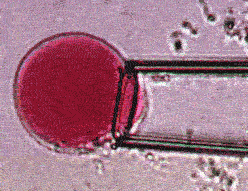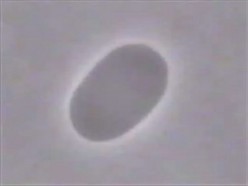
| Physics and Astronomy |
|
| Physics Home | Study here | Our Teaching | Our Research | Our Centres | News | Work here | EMPS |
|
Biomedical Physics
Research Projects
Facilities
|
|
Back to top
Giant Lipid Vesicles and Native Cell MembranesGiant Lipid Vesicles and Native Cell MembranesCurrent studies:
Micropipette Aspiration
Depending on the thermodynamical state of the membrane, this method can be used to evaluate the three main elastic characteristics of the membrane (bending, linear shear and the compressibility moduli). Stability (breaking stress) and shear viscosity are also open to exploration by this technique. We are particularly interested in the mechanical properties of Red Blood Cells. In disease, membrane elasticity could change leading to circulatory problems. Thermal Shape Fluctuations of Giant Lipid Vesicles
Giant lipid vesicles (typically tens of micrometres in size) are one of the best model systems for biological membranes. In their liquid state they are extremely soft and exhibit constant thermal shape fluctuations. We use an advanced method for analysis of the shape fluctuations (flicker spectroscopy) in order to measure the bending elastic modulus of this type of membranes. In this way, giant vesicles can be used as elastic probes to evaluate the contribution of different biologically relevant additives to membrane elasticity. Click on the image to see a video of vesicle fluctuation. Raman MicrospectroscopyRaman microspectroscopy can provide information about the composition and structure of cell membranes: lipid composition, protein content, molecular conformations and protein-lipid interactions. |
